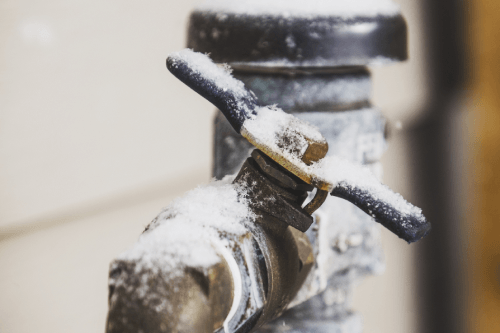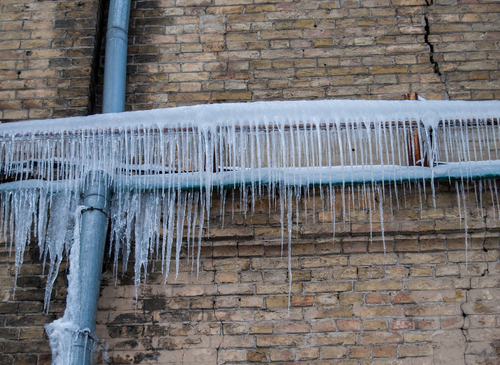Essential Advice to Protect Against Frozen Pipes in Cold Weather
Essential Advice to Protect Against Frozen Pipes in Cold Weather
Blog Article
What're your ideas about How to Prevent Your Pipes From Freezing?

Winter can ruin your plumbing, specifically by freezing pipelines. Below's exactly how to prevent it from taking place and what to do if it does.
Introduction
As temperatures decrease, the threat of frozen pipelines increases, potentially leading to pricey repairs and water damages. Understanding exactly how to stop icy pipes is important for home owners in cold climates.
Comprehending Icy Pipelines
What creates pipes to freeze?
Pipelines freeze when exposed to temperatures below 32 ° F (0 ° C) for expanded durations. As water inside the pipelines ices up, it increases, taxing the pipeline wall surfaces and possibly creating them to break.
Threats and problems
Icy pipes can cause water system disruptions, home damage, and expensive fixings. Ruptured pipes can flooding homes and create substantial structural damage.
Indicators of Frozen Pipeline
Recognizing frozen pipes early can prevent them from breaking.
Just how to recognize frozen pipelines
Seek decreased water circulation from faucets, unusual smells or sounds from pipes, and visible frost on exposed pipes.
Avoidance Tips
Protecting susceptible pipelines
Cover pipes in insulation sleeves or use warmth tape to shield them from freezing temperature levels. Focus on pipes in unheated or outside areas of the home.
Heating strategies
Maintain interior areas effectively warmed, specifically locations with pipes. Open up closet doors to permit cozy air to flow around pipelines under sinks.
Securing Outdoor Pipes
Garden pipes and outdoor taps
Detach and drain garden tubes before wintertime. Mount frost-proof spigots or cover outdoor faucets with shielded caps.
What to Do If Your Pipelines Freeze
Immediate activities to take
If you believe icy pipes, maintain taps open up to ease stress as the ice melts. Utilize a hairdryer or towels taken in warm water to thaw pipelines gradually.
Long-Term Solutions
Structural adjustments
Think about rerouting pipes far from exterior wall surfaces or unheated areas. Include additional insulation to attics, basements, and crawl spaces.
Updating insulation
Buy premium insulation for pipes, attics, and walls. Appropriate insulation assists keep regular temperature levels and minimizes the threat of frozen pipes.
Verdict
Avoiding icy pipes calls for aggressive procedures and fast reactions. By understanding the causes, indicators, and safety nets, home owners can secure their plumbing throughout winter.
5 Ways to Prevent Frozen Pipes
Drain Outdoor Faucets and Disconnect Hoses
First, close the shut-off valve that controls the flow of water in the pipe to your outdoor faucet. Then, head outside to disconnect and drain your hose and open the outdoor faucet to allow the water to completely drain out of the line. Turn off the faucet when done. Finally, head back to the shut-off valve and drain the remaining water inside the pipe into a bucket or container. Additionally, if you have a home irrigation system, you should consider hiring an expert to clear the system of water each year.
Insulate Pipes
One of the best and most cost-effective methods for preventing frozen water pipes is to wrap your pipes with insulation. This is especially important for areas in your home that aren’t exposed to heat, such as an attic. We suggest using foam sleeves, which can typically be found at your local hardware store.
Keep Heat Running at 65
Your pipes are located inside your walls, and the temperature there is much colder than the rest of the house. To prevent your pipes from freezing, The Insurance Information Institute suggests that you keep your home heated to at least 65 degrees, even when traveling. You may want to invest in smart devices that can keep an eye on the temperature in your home while you’re away.
Leave Water Dripping
Moving water — even a small trickle — can prevent ice from forming inside your pipes. When freezing temps are imminent, start a drip of water from all faucets that serve exposed pipes. Leaving a few faucets running will also help relieve pressure inside the pipes and help prevent a rupture if the water inside freezes.
Open Cupboard Doors
Warm your kitchen and bathroom pipes by opening cupboards and vanities. You should also leave your interior doors ajar to help warm air circulate evenly throughout your home.

I was made aware of that report about How To Avoid Freezing Pipes from a good friend on a different blog. Sharing is nice. Helping others is fun. I am grateful for being here. Don't hesitate to pay a visit to our blog back soon.
Click For More Info Report this page